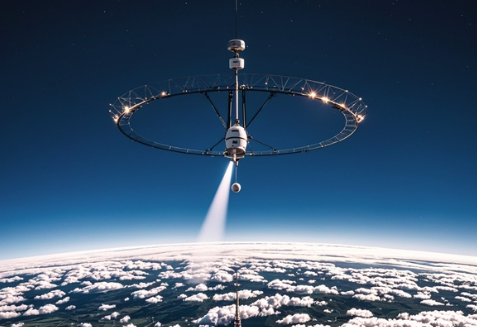Making Wireless IoT Project Easy, Smart, Secure.
GET A FREE SAMPLEThere are various ways of satellite timing, such as one-way timing and two-way timing. In one-way timing, satellite timing terminals can autonomously complete timing. The timing terminal receives navigation messages from satellite broadcasts, which include time reference information, navigation satellite ephemeris, and message transmission time. Afterwards, the basic observation and navigation message information are calculated, and the clock error is obtained to correct the local time and achieve synchronization between the local time and UTC. At the same time, users need to receive signals from at least four navigation satellites and determine the three-dimensional position and receiver local time through comprehensive analysis.

1、 Two modes of one-way timing
RNSS one-way timing
The timing terminal obtains its own position information through autonomous calculation or obtains timing information based on known coordinate position information. Satellite navigation message information includes whole week second count, intra week second count, clock error parameters, and synchronization parameters with UTC time. The RNSS timing terminal receives satellite navigation signals and autonomously calculates the time difference ∆ TJST-GNT between the local time and the GNSS system, and corrects the local clock based on the time difference ∆ TGNT-UTC between the satellite navigation system and UTC to synchronize the local time with UTC time.
RDSS one-way timing
The principle is similar to RNSS, but due to the transparent forwarding of outbound signals by RDSS satellites, the difference between local time and UTC time obtained through the timing terminal also includes the propagation delay of the uplink signal and the zero value of the satellite repeater. The uplink propagation delay is obtained from the RDSS outbound message.
2、 RDSS bidirectional timing
RDSS bidirectional timing: The bidirectional timing equipment has the ability to receive outbound signals and respond to inbound signals. By measuring back and forth with the ground center station, the time difference between the timing terminal and the ground center station is obtained by the center station, which can avoid the unidirectional timing deviation caused by many uncertain factors such as antenna position errors of the timing terminal and ionospheric/tropospheric reconstruction residuals. Compared with RDSS unidirectional timing, bidirectional timing has higher timing accuracy.
RDSS bidirectional timing is initiated by the timing terminal through a timing request. The timing terminal interacts with the ground center station and sends a timing request to the ground center station. The ground center station calculates the time difference between it and the timing terminal and broadcasts it to the timing terminal through an outbound signal. The forward propagation delay information T returned by the timing terminal and the difference Δ T (GNT-UTC) between the RDSS system time obtained from the outbound message and UTC time are corrected to synchronize the local time with UTC time to complete bidirectional timing.
3、 Common applications of one-way satellite timing
Unidirectional satellite timing is relatively common and can meet most of the requirements for low to medium precision timing. The basic principle of GPS navigation is the real-time interaction of navigation messages between user terminals and satellite terminals. Through positioning calculation methods, the user's location information is updated in real time and a path is planned to guide the direction of travel. It is necessary to use the time recorded by the clock and the timestamp information of message transmission and reception to form location information.
Satellite one-way timing is quite common, and the typical applications of satellite one-way method include mobile GPS timing and navigation positioning, Beidou timing and positioning, vehicle GPS timing and navigation positioning, and military facility timing and positioning that can receive military codes. Satellite one-way timing can meet the requirements of most low to medium synchronization accuracies and is widely used. In the Beidou timing terminal, high-precision timing services such as NTP, B-code, PTP, and serial port are comprehensively implemented using high-precision time information calculated from received navigation signals. B-code is one of the most widely used specialized time codes, characterized by moderate speed, rich encoding information, universal specifications, and flexible and convenient use. The B-code terminal based on Beidou timing has been increasingly widely used in fields such as range measurement, control, calculation, communication, meteorology, and power.
Prev:Indoor Accurate Personnel Asset Positioning Solution for Supermarkets
Next:Introduction to Atomic Clock Technology, a Core Component of Satellite Navigation
Copyrights© Shenzhen Skylab Co.,LTD All Rights Reserved.

